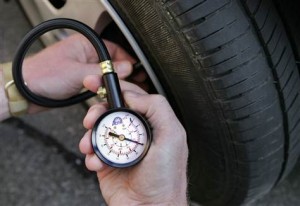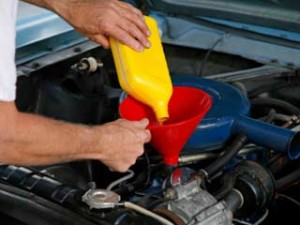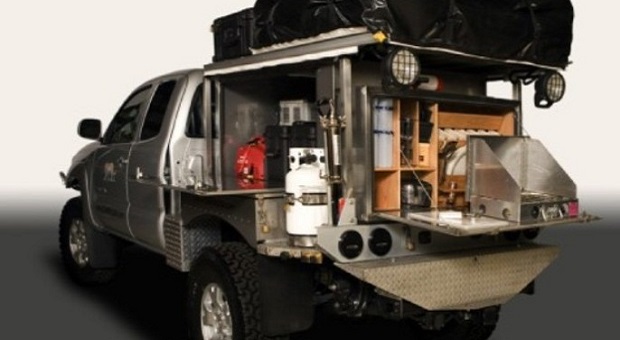If you’re the type of individual who plans to get out of dodge when SHTF, chances are you’ve given some thought as to how you’ll get there.
It’s inevitable that major roads will be congested with traffic as others evacuate the area. Yet attempting to bypass the traffic on foot poses just as many obstacles. In doing so you’re more likely to get lost, encounter danger, and fail to cover much ground. For many preppers, the bug out vehicle (BOV) is the answer to these problems.
In an earlier post, we discussed a few tips for low consumption driving and how things like vehicle weight, acceleration control, tire pressure, and fuel types play an important role in your vehicle ability to get you to safety. We noted that there is no such thing as a perfect bug out vehicle. However, things like speed, protection, fuel efficiency, and off-road capabilities are commonly sought components in a reliable BOV.
This article will continue on the topic of bugging out in a vehicle and discuss other ways to keep your BOV ready to go.
Bug-Out Vehicle Check List
Whether your vehicle is your everyday commuter car or an all-terrain camper truck, your mission is the same when SHTF. You want to get your family into your vehicle as quickly as possible and get on the road. You also want that vehicle to have everything you need to keep you alive for a few days on the road until you reach your shelter or find safety.
There are two separate components to BOV prepping that you must factor in when getting out of dodge:
- your vehicle is well maintained and mechanically suited to drive long distances,
- your vehicle is loaded with the various supplies and gears you’ll need to survive on and off the road.
The 3 Fatal Mistakes You Must Absolutely Avoid In A Crisis
Keep in mind, even those set on sheltering in place when SHTF cannot hedge their bets on a single preparedness plan. Every prepper knows that being prepared means having the measures in place to hunker down AND bug out and the ability to do either as soon as disaster strikes.
You don’t necessarily have to devote a substantial portion of your prepping budget into your vehicle, especially if your plan is to stay put. A surprising number of minor and inexpensive tasks can be what makes the difference between a roadworthy BOV and a worthless hunk of steel on wheels.
Whether or not you plan on hunkering down or bugging out, if there’s a vehicle in your driveway you should consider the following tips to keep it ready.

Tires – The idea behind the bug out route is that your vehicle’s four wheels will get you much further than your two legs. If you don’t have quality, well-inflated tires with good traction, you won’t get very far when SHTF.
Inspect the tread and pressure levels of your tires routinely, especially in the winter months. You should also have your tires rotated and your wheels at least every 5,000 miles to maintain their condition.
Additionally, you should plan on keeping a complete spare tire in addition to the donut that comes with your car. If space inside or above your car allows or you plan on bugging out over an extended route of rough terrain, you may consider keeping a full set of spare tires on board your BOV.
Related:Prepping 101 – Preppers List of Supplies
Battery – Your car won’t start without a battery. It’s also bound to fail sooner than later if your battery is old and worn.
It’s recommended that you replace your battery about every four years, as they tend to lose their acidic charge at about that time. Some batteries last much longer and some give out much sooner, it’s up to you to watch for signs of decline.
It’s not a bad idea to keep an extra new battery on board your BOV, as you never know if there will be other (friendly) survivors on the road willing to pull over and give you a jumpstart.
Fluids – Your vehicle’s engine fluids are one of the easiest things to regulate, though many people still ignore them.
Your engine oil and oil filter should be changed regularly, and an extra quart or two should be kept on board in case of a leak. Your transmission fluid, brake fluid, power steering fluid, engine coolant, and windshield wiper fluid should also be filled and extras of each kept on board (if space allows). Make sure each of these tanks are also drained and filled with fresh fluids regularly.

Gas – A BOV without a full tank of gas is not a BOV. If you have a vehicle designed to get you out of dodge, you should make sure it’s ALWAYS filled with gas. That means every time you take it out for errands or run practice bug out drills you should fill the tank on your return trip home.
Also keep two full canisters of fresh gasoline at home to top your tank off last minute or while on the road. If you have a bug out shelter, make sure it too has a supply of fresh gasoline for refilling your tank upon arrival.
Also consider carrying a few quarts of fuel additives to freshen any questionable sources you may come across on your route.
Related:Should you get a Ham Radio License or Hide from the Government?
Radio – Aside from the AM/FM radio in your car, which may or may not broadcast emergency information during a disaster, you should have a back up communications device in your car.
This may already be part of your bug out bag that you carry in your vehicle, but if not you should consider an alternate means of communication to your cell phone and car stereo.
For more on this, check out our article all about communicating after a disaster.
Tools – In the event of a breakdown, your hands alone won’t do you much good. Your BOV should be stocked with a tool kit that contains (at the very least) a set of screwdrivers, hammer, pliers, wrenches, socket set, utility blade, pry bar, and a roll each of electrical and duct tape.
Even if you’re no mechanic, these tools could save your life and that of your vehicle.
In a follow-up post, we will look deeper into the gear aspect of BOV prepping. The above pointers are mostly oriented towards keeping your vehicle itself maintained.
This is important above all, as your BOV is only useful if it can successfully get you and your family to safety without breaking down. From there, you’ll find some insurance knowing you have all the necessary equipment and supplies on board to survive on the road.
This article has been written by Cody Griffin for Survivopedia.





Great posts, is the car in the article yours?